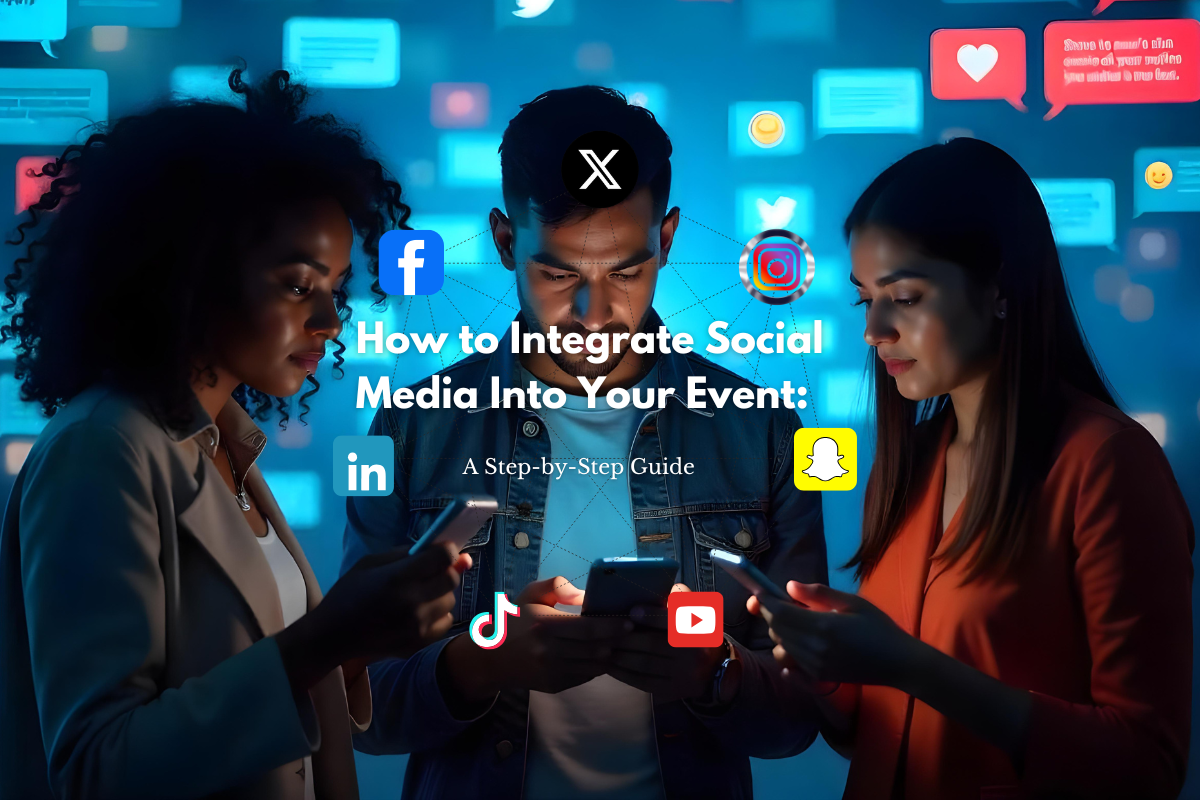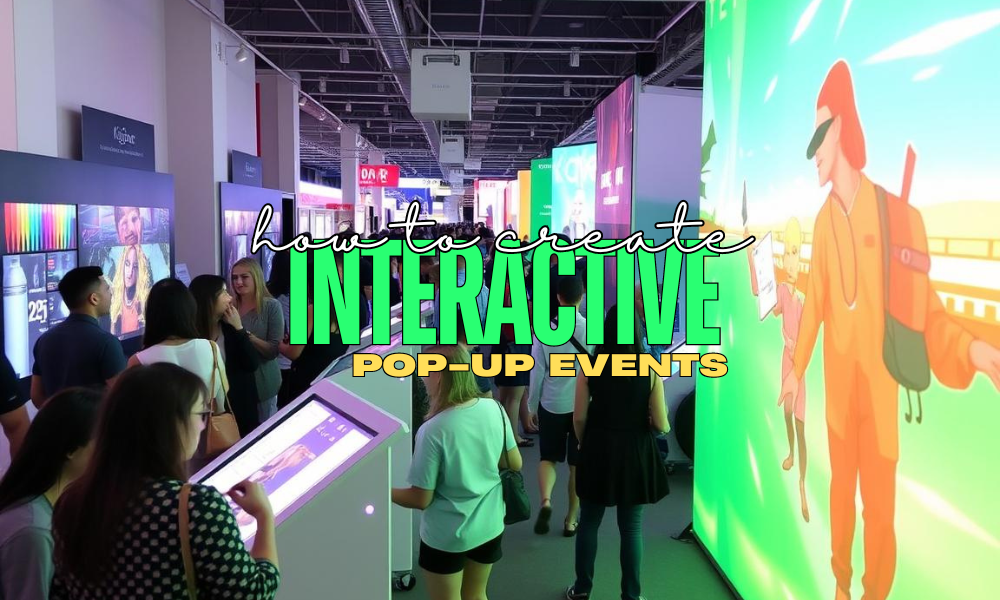
In today’s digital-first world, integrating social media into your event is no longer optional—it’s essential. Social media can amplify your event’s reach, boost...
Hey there, event planners and enthusiasts!
Hybrid events are revolutionizing how we connect, combining the best of in-person and virtual experiences.
They offer unparalleled flexibility, broader reach, and unique engagement opportunities. However, pulling off a successful hybrid event requires some savvy planning and execution.
Ready to make your next hybrid event a smash hit?
Here are seven actionable tips with real-world examples to get you started!
A hybrid activation is “an event where some folks are physically in-person while others join in virtually from around the world”.
It’s all about creating a unified experience that caters to both audiences seamlessly.
Hybrid events allow you to blend both physical and digital worlds, ensuring that everyone can participate in the way that suits them best.
This approach is particularly beneficial in today’s global and often remote-centric environment, where travel restrictions or personal preferences might limit in-person attendance.
.png?width=2240&height=1260&name=Create%20Engaging%20Content%20(1).png)
Hybrid events are all the rage because they’re flexible, cost-effective, and can engage a global audience. Again, they combine the tangible benefits of face-to-face interactions with the expansive reach of virtual technology.
Plus, they offer killer data and analytics to help you plan even better events in the future.
For instance, you can track virtual engagement metrics like click-through rates and session participation, while also gathering in-person feedback through surveys and direct interactions.
This comprehensive data collection enables a deeper understanding of your audience’s preferences and behaviors, helping you refine your strategies for future events.

First things first: what are you looking to achieve?
Are you looking to boost brand awareness, generate leads, or educate your audience?
Clear goals will steer your planning.
Take Microsoft’s Ignite event, for example. It’s all about educating IT pros, which drives high engagement through targeted content.
Whether you aim to introduce a new product, build community, or offer educational sessions, defining your goals will help you structure your event more effectively and ensure that all elements align with your desired outcomes.
Know your audience like the back of your hand.
Understanding their needs, preferences, and expectations is crucial for creating a valuable experience.
For example, Adobe’s MAX conference tailors content for creative professionals, offering both in-person and virtual sessions that hit the mark.
Conduct pre-event surveys or polls to gather insights into what your audience wants to see and learn. This approach not only helps in content creation but also makes your audience feel valued and heard.
 StreamYard's Dashboard
StreamYard's Dashboard
Invest in a rock-solid hybrid event platform.
Hopin is a great choice as it offers live streaming through its product, StreamYard.
You want a platform that can juggle both in-person and virtual elements without breaking a sweat. Look for features like seamless integration with social media, customizable event pages, and robust security measures.
Additionally, ensure that the platform supports various interactive elements such as live chats, Q&A sessions, and polls to keep your virtual audience engaged.
Test, test, and test again.
Salesforce’s Dreamforce event does multiple dry runs to ensure the tech works flawlessly.
From internet connections to AV equipment, make sure everything’s in tip-top shape before the big day.
Schedule several rehearsal sessions with your team and speakers to familiarize everyone with the technology. This helps identify potential issues early on and allows you to troubleshoot before the event goes live.
Don’t forget to have a tech support team on standby during the event to address any unforeseen technical glitches promptly.

Craft content that keeps both in-person and virtual attendees hooked.
South by Southwest (SXSW) nailed this with interactive sessions, live polls, Q&As for online folks, and on-site activities for those attending in person during their 2022 conference.
When planning your content, think about how each segment will translate across both mediums.
For example, a keynote speech can be live-streamed to virtual attendees while in-person attendees watch on large screens, creating a unified experience.
Additionally, consider exclusive content for each group, such as behind-the-scene tours for virtual attendees or hands-on workshops for those on-site.
Spice things up with videos, infographics, and other multimedia goodies.
TEDx events are pros at this, making even the most complex topics accessible and engaging.
Incorporate pre-recorded interviews, animated explainer videos, and interactive infographics to break up the monotony of traditional presentations.
This not only keeps your audience engaged but also caters to different learning styles.
Remember, the goal is to make your content as dynamic and interactive as possible to hold your audience’s attention.

Make virtual networking a breeze with tools like chat rooms, breakout sessions, and one-on-one meeting schedulers.
Web Summit’s Summit Engine does this brilliantly, making online attendees feel just as connected as those on-site.
Encourage participants to create detailed profiles and use matchmaking algorithms to suggest potential connections based on interests and professional backgrounds.
Virtual lounges and themed networking sessions can also help replicate the spontaneous interactions that naturally occur at in-person events.
Create fun spaces for in-person attendees to mingle.
CES, for example, has networking lounges, interactive sessions, and social events that make on-site networking a joy.
Design your event layout to include plenty of communal areas where attendees can casually interact. Offer interactive activities like scavenger hunts, live demos, and hands-on workshops to facilitate personal connections.
Providing ample opportunities for socializing outside of formal sessions can significantly enhance the in-person experience.

Keep everyone in the loop with real-time updates.
Apple’s WWDC excels at this, using email, push notifications, and social media to ensure attendees are always in the know.
Create a detailed communication plan that includes pre-event reminders, during-event updates, and post-event follow-ups. Utilize multiple channels to reach your audience effectively, ensuring that important announcements are seen and acted upon promptly.
Regular updates help manage expectations and keep attendees informed about any changes or highlights.
Give clear, easy-to-follow instructions.
IBM’s Think event provides detailed login details for virtual attendees and clear schedules for in-person participants, making sure everyone’s on the same page.
Offer step-by-step guides, FAQ sections, and dedicated support channels to assist attendees with any issues they might encounter.
Clear instructions help reduce confusion and ensure a smooth experience for all participants, whether they are joining virtually or in person.

Track your event’s success with analytics.
Google I/O, for example, uses metrics like attendance, participation levels, and feedback to gauge what’s working and what needs tweaking.
Use your event platform’s analytics tools to monitor engagement in real time.
Look at data such as session attendance, interaction rates, and content downloads to understand how attendees are engaging with your event.
This information is invaluable for identifying popular sessions, effective engagement strategies, and areas for improvement.
Gather and analyze feedback from your attendees.
HubSpot’s INBOUND event does this to refine and enhance future events, ensuring they keep hitting it out of the park.
Send out post-event surveys and encourage honest feedback.
Analyze this data to identify trends and common suggestions. Use this feedback to make informed decisions about future events, improving the overall experience for your attendees.
Regularly reviewing and acting on feedback demonstrates your commitment to continuous improvement and helps build a loyal attendee base.

Have a backup plan ready to roll.
Adobe MAX includes backup equipment, alternative internet connections, and tech support staff on standby to tackle any hiccups.
Prepare for common technical issues by having redundant systems and backup plans in place. For example, if your primary internet connection fails, ensure you have a reliable secondary connection ready to go.
Train your staff to handle technical emergencies swiftly and efficiently to minimize disruption.
Stay flexible and ready to adapt.
Develop a contingency plan that outlines how to handle unexpected changes, such as speaker cancellations or sudden shifts in the agenda.
Maintain open communication with your team and attendees to manage expectations and ensure everyone is on the same page.
Flexibility and quick thinking can help you navigate any challenges that arise, ensuring your event remains a success.
Hybrid events are here to stay, and they’re a fantastic way to connect with audiences far and wide.
By following these seven actionable tips and taking inspiration from the real-world examples I spoke of, you can create a hybrid event that’s engaging, seamless, and downright unforgettable.
Remember, the key is in planning, the right tech, and always keeping your audience at the heart of everything you do.
With a bit of creativity and strategic thinking, you can deliver an exceptional hybrid event experience that leaves a lasting impression.
Hybrid events offer increased reach, flexibility, and engagement opportunities. They also provide valuable data and analytics, enhancing future event planning.
Thorough planning, testing technology, and having a contingency plan are essential. Clear communication with attendees and real-time updates also helps manage the event effectively.
A robust event platform, reliable internet connection, audio-visual equipment, and interactive tools for engagement are crucial for a successful hybrid event.
Interactive sessions, live polls, Q&A segments, and virtual networking tools can keep online attendees engaged and involved.

In today’s digital-first world, integrating social media into your event is no longer optional—it’s essential. Social media can amplify your event’s reach, boost...

Creating an interactive pop-up event is an exciting way to engage your audience, showcase your brand, and create memorable experiences!
These temporary and dynamic...